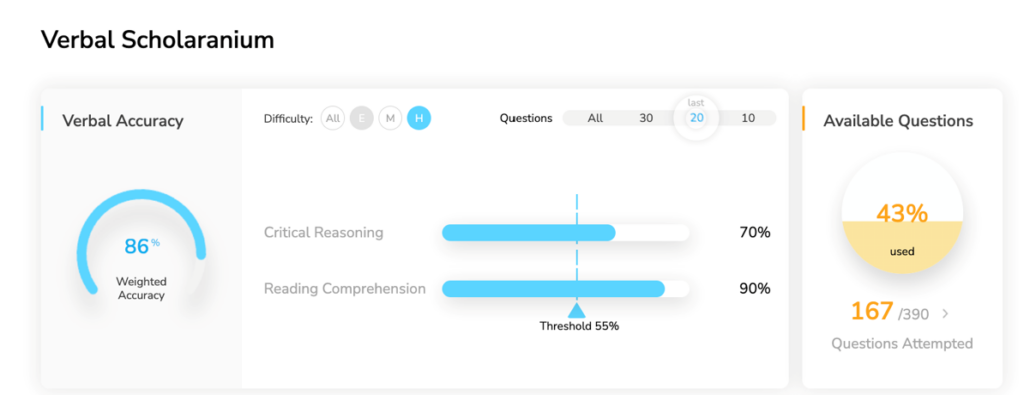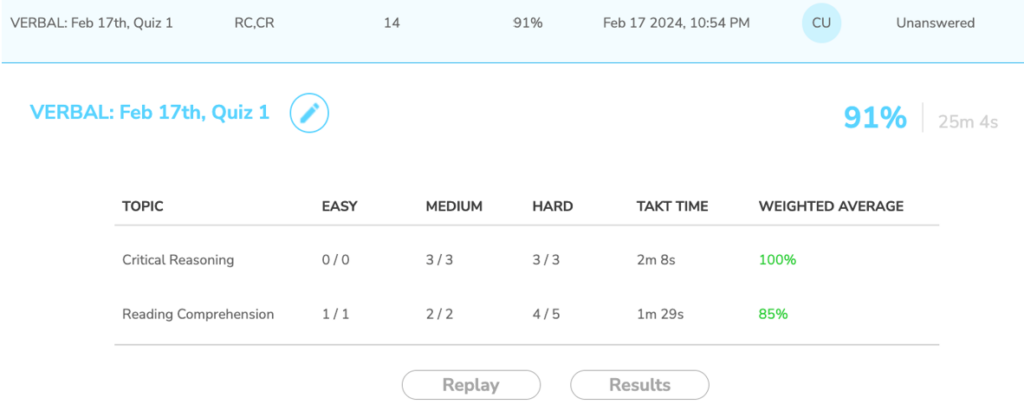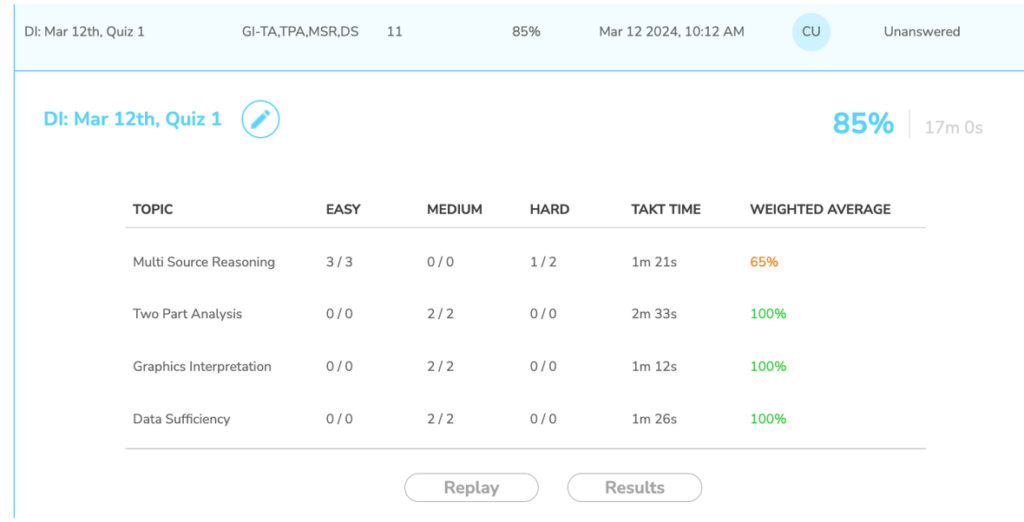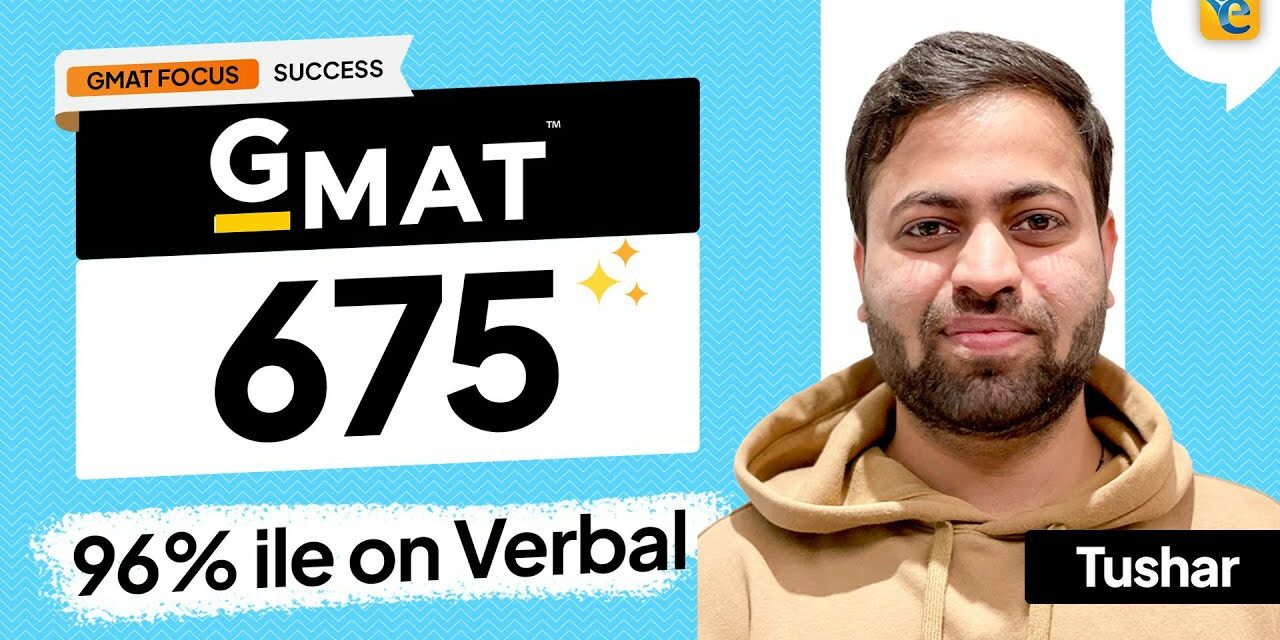Introduction: Tushar’s Triumph on the GMAT Focus Edition
Tushar’s journey to achieving a 675 with a Q84 in Quant, V85 in Verbal, and a D81 in Data Insights on the GMAT Focus Edition is a compelling tale of resilience and strategic planning. Unlike many who prepare for months or even years, Tushar navigated the challenges of the new exam format with focused determination, making significant improvements in a relatively short period. His story highlights not only his dedication but also the effectiveness of structured preparation to finally get a Darden Admit.
In this article, we’ll uncover:
- How did Tushar overcome the initial setbacks and adapt to the new Data Insights section?
- What were the key strategies that led to his impressive improvement in verbal reasoning?
- How did Tushar utilize advanced tools like error logs and Scholaranium to hone his skills?
- What crucial role did mentorship play in Tushar’s GMAT success and MBA application journey?
Read on to discover the meticulous approach Tushar took, the strategies he implemented, and the lessons that can help you achieve your GMAT goals.
Ready to tackle the GMAT Exam? e-GMAT offers a Personalized Study Planner and top-notch GMAT mock exams to help you prepare effectively. As the most reviewed GMAT prep company on GMAT Club with 2700+ reviews we’re here to support your GMAT journey. Take advantage of our free trial with the best quality content. Start your path to success today!
- Introduction: Tushar’s Triumph on the GMAT Focus Edition
- Initial Challenges & Understanding the Data Insights Section
- Mastering Comprehension to Improved Verbal Skills
- Utilizing Error Logs for continuous improvement especially in Quant
- Leveraging Scholaranium and Adapting to Test Readiness Strategies
- Role of Mentorship and MBA Applications
- Key Takeaways and Advice for Future Aspirants
Initial Challenges & Understanding the Data Insights Section
Tushar’s GMAT journey was not without its challenges. One of the most significant hurdles he faced was adapting to the new Data Insights (DI) section of the GMAT Focus Edition. Unlike the previous Integrated Reasoning (IR) section, DI is now counted within the overall score, increasing the stakes and introducing a variety of new question types.
Reflecting on his preparation, Tushar shares, “Understanding the importance of the DI section and adapting to it was one of the biggest challenges I faced. It was a significant shift from the IR section, and I had to adjust my study approach accordingly.”
Tushar started familiarizing himself with the question types and gradually increased the difficulty level and that helped him to build confidence. e-GMAT’s concept files and practice questions mirrored the actual exam’s difficulty. Tushar improved his DI accuracy from 40% to 80%, achieving the 90th percentile. This strategic preparation ensured he was well-equipped to tackle the DI section on the actual exam, demonstrating the importance of systematic practice and adaptability.
Watch how Tushar overcame his DI Challenges here:
Mastering Comprehension to Improved Verbal Skills
Tushar’s journey in improving his verbal skills to finally achieving a 96th percentile, began with mastering comprehension. Initially, he struggled with skimming passages and missing crucial details, which affected his performance. e-GMAT’s Master Comprehension course provided Tushar with the tools to enhance his reading strategies, teaching him the importance of pauses within sentences and understanding their meanings.
Tushar explains, “Master comprehension gave me a solid platform to build upon. This approach helped me comprehend questions at a deeper level, especially in sentence correction where subtle differences between options can be critical.”
Pre-Thinking Strategy for Critical Reasoning
Initially, Tushar’s approach involved quickly moving to the answer choices without thoroughly understanding the question stem, which often led to mistakes.
Tushar shares, “Pre-thinking meant spending extra seconds with the question stem to understand what the question was truly asking. This helped me anticipate potential answers and avoid trap choices.”
This approach not only streamlined his thought process but also significantly improved his accuracy. His practice paid off, as evidenced by his 70% hard accuracy in CR, translating to the 90th percentile.

Fig 1: 70% CR Hard Accuracy indicates 90th %ile in actual GMAT exam
Enhancing Reading Comprehension Skills
Reading Comprehension (RC) posed a significant challenge for Tushar initially. While he had a good grasp of the basics, managing long and complex passages within the time constraints was difficult.
“Initially, I spent too much time on the second and third questions after reading a passage. By spending extra time on the first question to understand and summarize the passage, I was able to reduce the overall time spent on subsequent questions,” Tushar recalls.
With e-GMAT’s guidance, Tushar employed targeted reading strategies and practiced extensively with challenging passages. His RC accuracy improved from the 60th to the 80th percentile, with his average time per question dropping to under two minutes. This progress was evident in both practice and his actual exam performance which eventually secured him a Darden Admit.

Fig 2: Tushar’s ESR snapshot from the actual GMAT exam
Watch how Tushar conquered his RC and MSR challenges:
Are you planning to pursue MBA at top business schools? Let us help you conquer the first step of the process i.e., taking the GMAT. Take a free mock test to understand your baseline score and start your GMAT prep with our free trial.
Utilizing Error Logs for continuous improvement especially in Quant
A key factor in Tushar’s success was his diligent and comprehensive use of error logs. Initially, he faced challenges with repeated mistakes, particularly in algebra and advanced topics. Tushar notes that the error log was invaluable for identifying patterns in his mistakes and focusing on those areas. By reviewing his error log regularly, he could see exactly where he was going wrong and then, make targeted improvements.
By tracking his errors and analyzing them, Tushar was able to pinpoint specific weaknesses. This focused approach led to significant improvements, with his accuracy in algebra increasing from 60% to 90%. The error logs enabled him to systematically address and correct his mistakes, turning weaknesses into strengths. This practice was crucial in enhancing his overall performance on the GMAT, showcasing the power of detailed self-analysis and continuous improvement. Here is a snapshot of his detailed CR Error log:

Fig 3: Snapshot of Tushar’s detailed CR Error log
How did Tushar improve in Quant?
As an engineer, Tushar had a solid Quant foundation, but the GMAT Focus Edition’s emphasis on algebra required adjustment. Initially, his accuracy in advanced algebra and geometry was around 60%. With e-GMAT‘s targeted practice and error log analysis, Tushar’s accuracy in advanced algebra rose from 60% to 90%. This data-driven approach helped him master concepts and enhance his speed, leading to strong Quant performance on the exam. Below snapshots are from Tushar’s Quant Error Log:

Fig 4: Snapshot of Tushar’s comprehensive Quant Error log

Fig 5: Deep dive into Tushar’s comprehensive and diligent Quant Error log
Leveraging Scholaranium and Adapting to Test Readiness Strategies
Role of Scholaranium
Scholaranium was an essential tool in Tushar’s GMAT preparation, providing him with extensive practice opportunities across various sections while using the platform to customize quizzes. With this, Tushar could focus on his weaker areas and track his progress effectively. We can see his progress in GI-TA medium difficulty level questions, going from 65% to 80% accuracy.

Fig 6: Tushar’s progress in GI-TA medium difficulty level questions went from 65% to 80% accuracy
For example, his accuracy in Data Insights improved from 50% to 80%, and in Critical Reasoning, his hard accuracy reached the 95th percentile. The platform’s analytics helped him understand his performance trends and make necessary adjustments to his study plan. Scholaranium’s targeted practice and detailed performance analysis played a crucial role in Tushar’s success, enabling him to build confidence and achieve a 675 on the GMAT Focus Edition.

Fig 7: Tushar’s DI Scholaranium data showing his hard accuracy to be ~70%
Adapting to Test Readiness Strategies
Preparing for the GMAT is not just about mastering content but also about strategic test-taking. It helped him understand the optimal order of attempting sections and manage his time effectively while taking full-length practice tests and analyzing his performance.

Fig 8: Tushar’s Test Readiness data for Verbal showing 91% accuracy before appearing for the actual GMAT

Fig 9: Tushar’s Test Readiness data for DI showing 85% accuracy before appearing for the actual GMAT
By using e-GMAT’s Sigma-X mocks, Tushar could simulate real test conditions. His last two mock scores were 675, which closely matched his actual score. This consistency provided confidence and insight into his readiness, ultimately contributing to his success on the GMAT.

Fig 10: Tushar’s last two mock scores simulating the real test conditions were 675 similar to his final score
Role of Mentorship and MBA Applications
Last Mile Push Program
Mentorship played a pivotal role in Tushar’s GMAT journey. Having a mentor to guide him through the preparation process was invaluable. This personalized mentorship helped Tushar navigate challenges, adjust his study plans, and maintain motivation.
Tushar reflects, “My mentor provided crucial guidance, helping me refine my strategies and keep me on track. The support and insights from Rida (Tushar’s mentor) were instrumental in my progress.”
MBA Applications Process
With a successful GMAT score, Tushar turned his attention to MBA applications. Early planning and strategic preparation were key. By starting the application process in April and pacing his efforts, Tushar was able to submit polished applications by the September deadlines. Tushar shares that starting early and planning meticulously helped him avoid last-minute surprises. he worked with consultants to refine his essays and prepare for interviews. His thorough preparation paid off, finally resulting in a Darden Admit. Watch the video below to understand how Tushar transitioned smoothly from his GMAT exam to his MBA applications.
Watch Tushar’s full interview here:
Key Takeaways and Advice for Future Aspirants
- Plan Meticulously: Detailed planning and early preparation are essential to avoid last-minute surprises.
- Use Targeted Practice Tools: Leverage tools like error logs and Scholaranium to identify weaknesses and focus on improvement areas.
- Seek Mentorship: Personalized guidance from mentors can provide crucial insights, keep you on track, and help refine strategies.
- Focus on Continuous Improvement: Regularly review and analyze performance data to make targeted corrections and improvements.
- Adapt and Overcome Challenges: Be flexible and willing to adjust your study plans to tackle new challenges effectively.
By implementing these strategies, future GMAT aspirants can achieve significant improvements and reach their goals, just as Tushar did.
Are you planning to pursue MBA at top business schools? Let us help you conquer the first step of the process i.e., taking the GMAT. Take a free mock test to understand your baseline score and start your GMAT prep with our free trial. We are the most reviewed online GMAT Prep company with 2000+ five star reviews on GMATClub.















